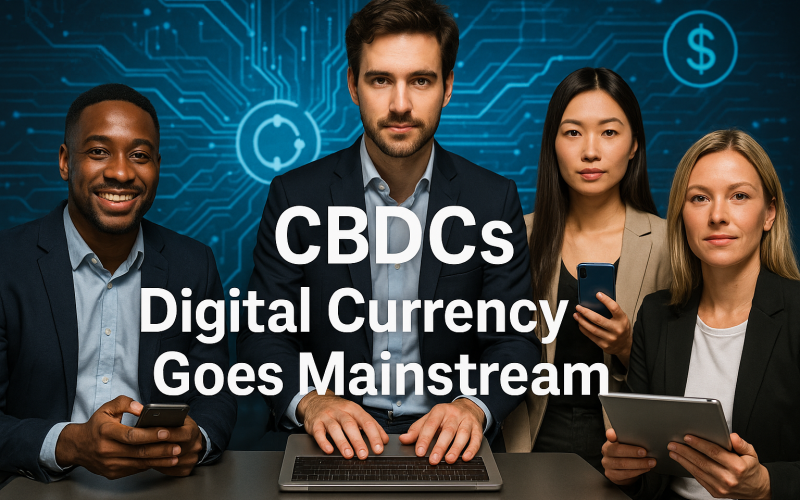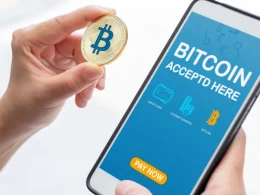Introduction
Money has changed a lot over the centuries. We moved from shells and coins to paper notes and plastic cards. Now, a new form of money is taking shape. Central banks worldwide are exploring central bank digital currency, or CBDC, adoption to bring digital money into everyday life. Imagine paying for groceries with a digital token backed by your country’s bank. No middleman, no high fees, and instant transfers.
At first, the idea of digital currency regulation can sound complex. Yet, this shift may affect how we pay, save, and trade. In this article, we will explore what CBDCs are. We will look at why they matter now. We will see how governments plan to use them. We will also discuss possible benefits and risks. Finally, we will share tips for staying informed as this trend grows. By the end, you will know why digital payment systems are evolving and how you can prepare for a world where digital money reigns.
What Is a CBDC?

A central bank digital currency is a digital form of a country’s official money. It is issued and backed by the central bank. Unlike cryptocurrencies, which use decentralized blockchain networks, a CBDC relies on the nation’s financial authority. You can think of it as digital cash. Just like physical notes and coins, a CBDC has a set value guaranteed by the government.
When you have a CBDC, you do not need a bank account to hold it. You use a digital wallet app provided or approved by the central bank. This wallet stores your digital tokens securely. You can send or receive payments without going through a private bank. The government oversees every transaction to ensure trust and security.
Many people ask, “How is this different from our current online banking?” The key is that a CBDC is direct liability of the central bank. Today, most digital money in our accounts is a promise by private banks. With a CBDC, you hold official digital money. This can help reduce banking fees, speed up payments, and give more people access to financial goods and services.
How Do CBDCs Work?

Behind the scenes, a blockchain-based currency or a secure ledger may record each transaction. But not all CBDCs use blockchain. Some rely on centralized databases managed by the central bank. In both cases, data is encrypted to prevent fraud.
1. Digital Wallet Creation
- First, you download an app approved by the central bank.
- You verify your identity using simple documents or biometrics.
- Once approved, you receive a digital wallet address and a unique key.
- This wallet links to your official identity but may keep details private.
2. Loading Your Wallet
- You convert physical cash or bank deposits into CBDCs.
- You visit a local agent or use an online bank to make the switch.
- Once converted, your digital wallet balance shows the amount of CBDC you hold.
3. Making Payments
- To pay someone, you select their mobile device wallet email address or scan a QR code.
- You enter the amount and confirm. The system deducts from your wallet instantly.
- The receiver’s wallet balance updates right away. No bank middleman is needed.
4. Receiving and Storing
- When someone sends you CBDC, your wallet receives tokens securely.
- The transaction is recorded on the ledger. You can check your balance anytime.
- Private keys ensure only you can access your digital money.
5. Exchanging Back to Cash
- If you need to convert back, you visit a bank or designated Securities and Exchange Commission point.
- You transfer digital tokens back to your bank account or receive paper currency.
- This process keeps digital and physical money linked at a one-to-one rate.
This model uses digital payment systems to help people pay and save. It works 24/7 and often costs less than traditional bank transfers. For rural or unbanked populations, a CBDC wallet can be a simple way to join the financial system.
Why CBDCs Are Gaining Traction

Central banks worldwide see potential in monetary policy innovation. When a government can track money flow in real time, it can respond faster to economic changes. For instance, during a crisis, the bank could send digital cash directly to citizens. This is faster than routing aid through banks or checks.
CBDCs also promise greater financial inclusion efforts. In many regions, people lack bank accounts. They struggle to save securely or access loans. With a simple smartphone and a CBDC wallet, they can join the digital economy. Governments hope this reduces poverty and spreads economic growth to rural areas.
Finally, digital virtual currency regulation can curb illegal criminal activities. Cash is hard to trace and can fuel money anti money laundering or tax evasion. CBDC financial transactions are transparent. While this raises privacy questions, it makes it harder for criminals to hide funds.
Future of CBDCs

In the next few years, more countries will likely offer CBDCs. Technology will improve, making digital money safer and easier to use. We may see mobile apps that let you pay rent, buy coffee, or send remittances abroad in seconds. CBDCs could also help with cross-border payments, making them cheaper and faster. As more people trust this new form of money, traditional banking may change. Schools and community groups will teach people how to use digital wallets. With time, CBDCs may become a normal part of everyday life for millions.
Comparative Table: Payment Methods
| Feature | Cash | Bank Transfers | Cryptocurrency | CBDC |
|---|---|---|---|---|
| Issuer | Central Bank | Private Banks | Decentralized Networks | Central Bank |
| Transaction Speed | Instant but limited | Hours or Days | Minutes to Hours | Seconds to Minutes |
| Fees | Low (note printing cost) | Medium to High | Variable, often high | Low to None |
| Accessibility | High in urban areas | High for banked people | Variable (needs tech access) | High if mobile/internet ready |
| Privacy Level | High (anonymous) | Moderate (bank records) | Pseudonymous | Low to Moderate (regulated) |
| Traceability | None | High | Limited (public ledger) | Very High |
| Risk of Theft | Physical risk | Counterfeit or hacking risk | Hacking or loss of keys | Cyber risk, but insured by bank |
| Suitability for Inclusion | Limited (requires physical) | Limited (requires bank access) | Limited (requires tech skills) | High (simple wallet setup) |
Conclusion
In the United States in 2025 central bank digital currency is not just a buzzword. It represents a big step in how we use money. By offering an official digital payment system, credit and debit cards, governments aim to boost financial inclusion efforts and reduce costs. CBDCs can speed up payments and cut fees. They also let central banks manage monetary policy more precisely. Yet, privacy concerns and cybersecurity risks remain. Countries must balance innovation with safety. As more pilots succeed, CBDCs will likely become part of our daily lives.
Making this shift smoothly requires public education and solid infrastructure. When done right, CBDCs can bring digital money to millions who lack banking payment services today. They may also spur new financial apps and tools. For consumers, it means faster transactions with lower fees. For businesses, it reduces friction in cross-border trade. Overall, digital wallet technology backed by central banks could reshape the financial world.











